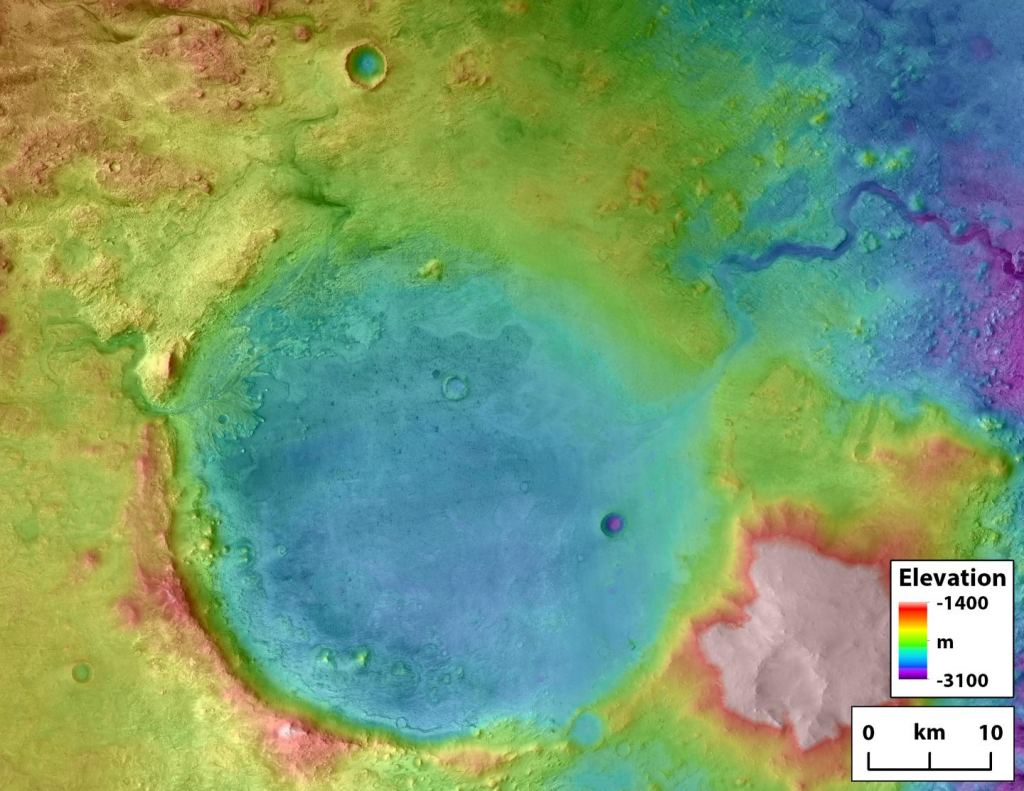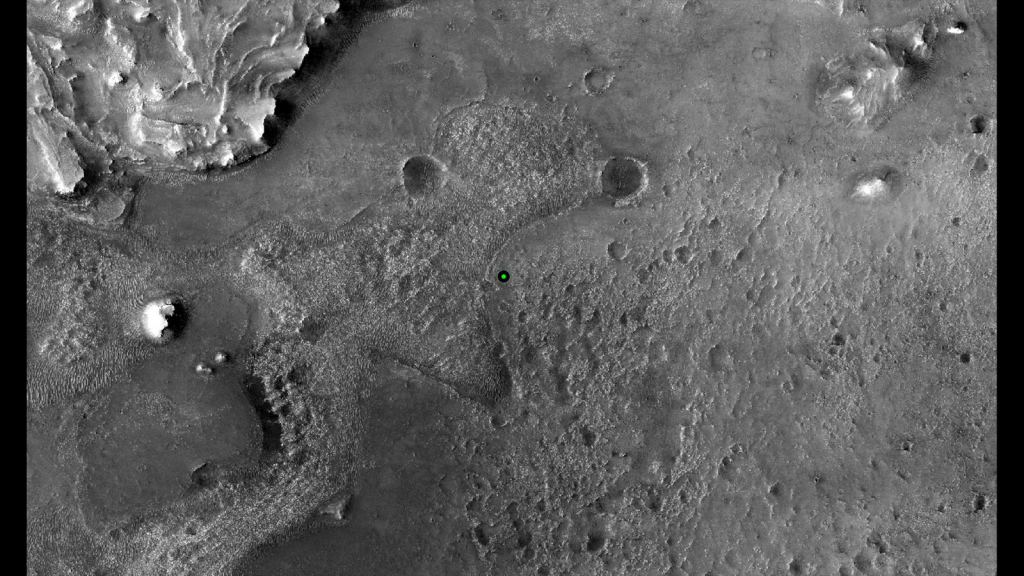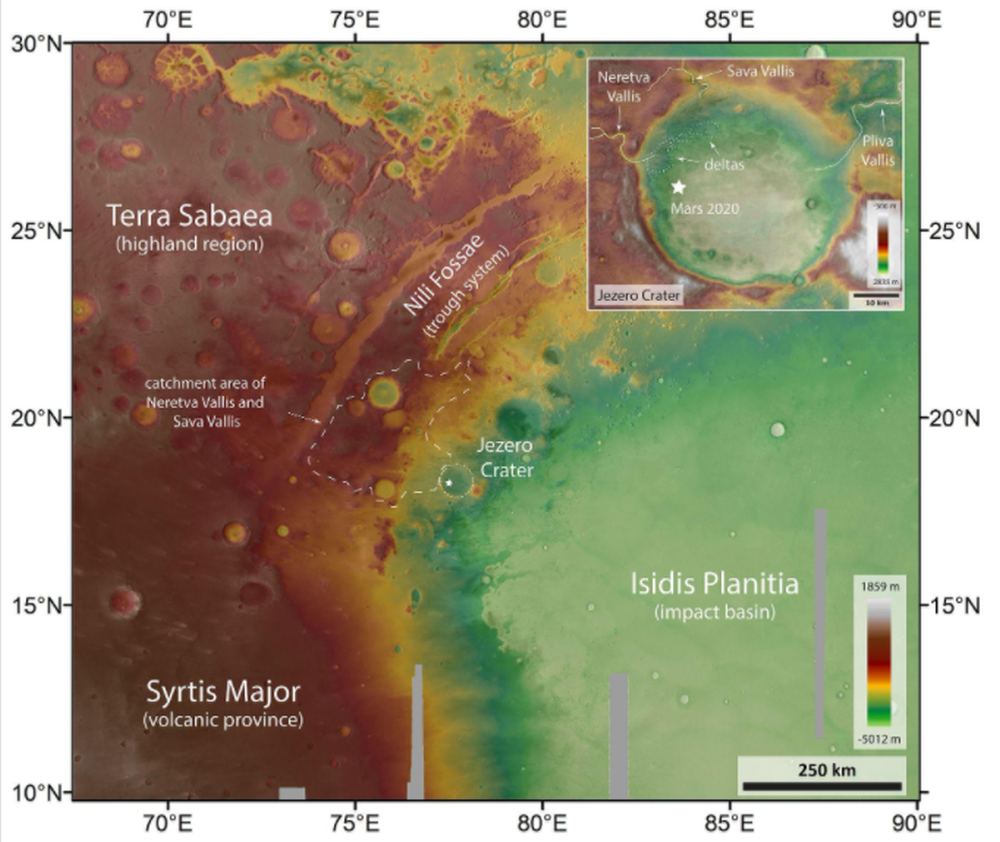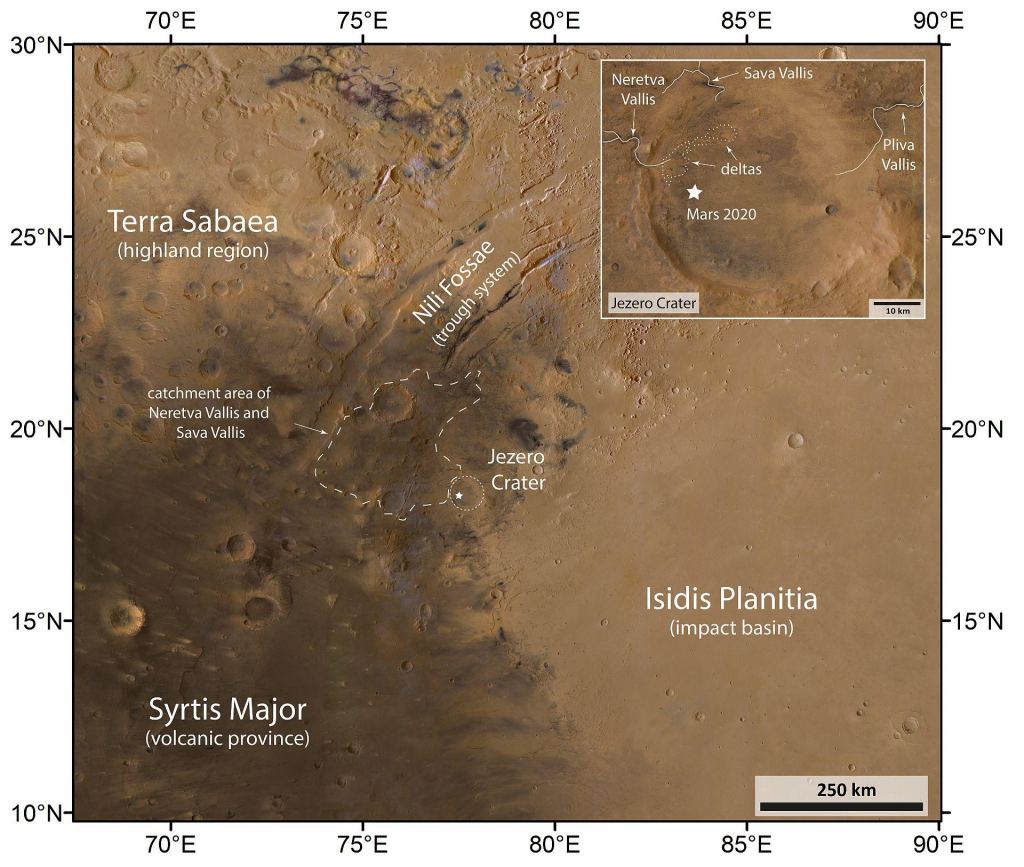What a Geologist Sees When They Look at Perseverance’s Landing Site
By Evan Gough
Geologists love fieldwork. They love getting their specialized hammers and chisels into seams in the rock, exposing unweathered surfaces and teasing out the rock’s secrets. Mars would be the ultimate field trip for many of them, but sadly, that’s not possible.
Instead, we’ve sent the Perseverance rover on the field trip. But if a geologist were along for the ride, what would it look like to them?
Geologists tell us there’s no substitute for fieldwork. Jezero Crater is where Perseverance is going on its field trip, and fortunately, the crater has been examined in different ways by different satellites. To a geologist’s eyes, the crater is a bonanza.
NASA chose the Jezero Crater for Perseverance’s mission partly because of its geology. Though geology is primarily concerned with the physical structure of a planet, it’s a growing part of understanding how a planet could have supported life. Biology is inextricably intertwined with geology. With its collection of sediments and its ancient shoreline, the Jezero Crater is a prime target for modern planetary geology.
Jezero Crater was a lake at one time in its past, possibly twice, according to some research. Scientists who study Jezero say the lake probably formed when there was a period of continual surface runoff. Two incoming watercourses fed the lake, and overflow carved a channel out of the lake.

The image above shows the Jezero Crater in elevation detail. Perseverance landed near the western side of the crater, near the clearly visible river delta. That river sediment contains ancient clays, which are especially good at trapping and preserving organic matter. If a real live geologist were along for the ride with Perseverance, they would likely head straight for those clays.
NASA’s Mars Reconnaissance Orbiter has been studying the Jezero Crater. One of its instruments is an imaging spectrometer named Compact Reconnaissance Imaging Spectrometer for Mars (CRISM). It’s especially good at identifying clays. The image below shows some of the clays in Jezero.

The river sediment is piled so high that its edge is like a cliff. Perseverance will traverse along the bottom of that cliff before working its way up and across the delta, hopefully making it to the ancient shoreline. Then, depending on mission length, the rover would climb Jezero’s 610 meters (200 ft.) crater rim and explore some of the plains surrounding the crater. Perseverance’s prime mission length is about one Mars year (about two Earth years) and NASA thinks that it could complete about half of this traverse during that time.
While a geologist—or really any other scientist or science-minded person—would be agape at the secrets that Jezero Crater holds, that would only be a start. If all goes well and Perseverance leaves the crater for the highlands, our fictional geologist would be alive with wonder at the geological richness of the region surrounding the crater.

The DLR (German Aerospace Center) operates a special camera on the ESA’s Mars Express Orbiter. It’s called the High-Resolution Stereoscopic Camera (HRSC). The HRSC is a powerful unit that’s mission is to image and study the surface of Mars. Among its tasks is the characterization of the planet’s geological evolution. Part of its job is to create hi-res Digital Terrain Models (DTM) of Mars, including the region surrounding Jezero.
The DLR recently released two images of Jezero Crater and the surrounding area, highlighting some of the geological context and the topography. The images help explain the area’s geological diversity and why it was chosen as Perseverance’s target area.

As the images show, the Jezero Crater lies on the border between different geological areas of different ages. The Terra Sabaea highland region contains rocks from Mars’ Palaeozoic (the Noachian: 4.1–3.7 billion years ago). The Isidis impact basin dates from the same time. The Isidis Planitia plain is much younger, dating back to the Hesperian (3.7–3.0 billion years ago) and the Martian Modern (the Amazonian 3.0 billion years to the present day). The result is that rocks and other deposits around Jezero Crater come from each of the three Martian geological epochs. To a geologist, this is a big rocky bonanza.
The nearby Syrtis Major is a volcanic province whose lava flows also date to the Hesperian. The Nili Fossae region is a trough system that was formed by the shocks from the Isidis impact. This is a geologist’s dream field trip. If Perseverance can complete its primary mission, it will explore some of the regions outside the Jezero crater.
Of particular interest are agglomerate debris called megabreccia that formed during the Isidis impact. They’re located west of Jezero in Noachian bedrock, igneous bedrock, and lava flows from Syrtis Major. Megabreccias can be very large, up to a kilometre across, and can hold valuable clues to Mars’ early history.

Though Perseverance can act as a kind of field geologist in some ways, it has its limitations. Its drill can only reach shallow depths. Any life that existed on Mars probably dates back to between 3.7 billion to 3.4 billion years ago, which is also when life appeared on Earth. Any shallow-surface evidence of microscopic life was probably destroyed by UV radiation, though some might be preserved in the sediments and clays.
Perseverance will collect its samples, and hopefully, a future mission will return them to Earth for deeper and more thorough study. That’s in line with how geologists work, too. Field samples are subjected to rigorous study back in labs.
Perseverance will teach us a lot about Mars’ geological history and how life might have existed there. Now that it’s safely on the surface of Mars, its mission is almost a success already. But it’s not the only rover to go on a field trip to Mars in the 2020s.

The ESA’s Rosalind Franklin Rover is going on its own trip to Mars. It’ll land in Oxia Planum, a region that holds a vast exposure of clay-bearing rock. It’s also a very geologically diverse region. The Rosalind Franklin will be able to take deeper samples than Perseverance can, down to two meters.
But we’re getting ahead of ourselves.
One day, an actual human geologist may very well set foot on Mars. Maybe several. But until then our rover geologists will have to do it for us.
If past missions are any indication, Perseverance will last well beyond its primary mission. NASA’s MSL Curiosity landed on Mars in August 2012 and is still going, thanks largely to its Multi-Mission Radioisotope Thermoelectric Generator (RTG). Perseverance has the same type of energy source, so barring mishaps, it’s reasonable to hope that the rover will make it out of Jezero Crater and into the surrounding areas, looking at and sampling rocks from all throughout Mars’ geologic history.
If that happens, it won’t just be our imaginary geologist that’s on a field trip of a lifetime. Probably every geologist on Earth will be living vicariously through that journey.
More:
- Press Release: An in-depth look at the geological context of the Mars 2020 landing site through the eyes of DLR’s HRSC instrument
- NASA: Perseverance Rover’s Landing Site: Jezero Crater
- Universe Today: NASA’s Perseverance Rover is Going to Jezero Crater, Which is Looking Better and Better as a Place to Search for Evidence of Past Life on Mars
The post What a Geologist Sees When They Look at Perseverance’s Landing Site appeared first on Universe Today.

February 26, 2021 at 04:44AM
via Universe Today read more...

Post a Comment